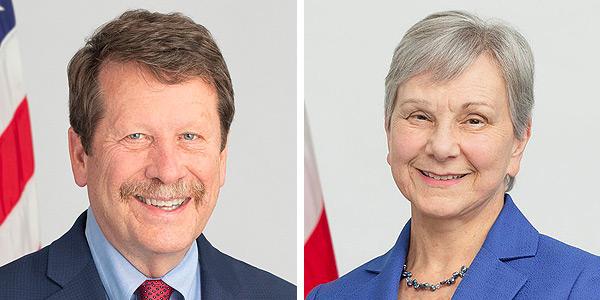Opening Statement from the Commissioner
Robert M Califf MD and Janet Woodcock MD
The FDA is a complex organization with a regulatory mission that is fulfilled in the context of public health, policy, law and science. While public health, policy, and law are very much in the public view, the deep and broad scientific base of the FDA is not so apparent and at times is under-appreciated. This report highlights updates to the 2021 FDA’s Focus Areas of Regulatory Science and makes apparent the incredible breadth and depth of FDA’s science base.
This report provides fascinating insight into the multidimensional spectrum of our science remit. The complexity of the human condition, including biology, physical sciences, social factors, environment and behavior is addressed by FDA’s detailed work on special populations, including children, racial and ethnic minorities and women. The range of products from food to cosmetics, supplements, drugs, devices, biologics (in people and animals) and tobacco makes the case that multiple areas of science must be brought together in order to derive optimal regulatory decisions.
Undergirding the scientific enterprise is this convergence of sciences as the universe is increasingly described in digital form, enabling previously unfathomable sources of data to be brought together. Consider the need to determine safe levels of a contaminant in food, the implications of a change in the microbial patterns in animals to human health or the likely risk of changes in software in complex medical devices. Resolution of such issues requires expertise in special areas of science combined with teamwork across disciplines.
In addition to highlighting the diverse scientific areas that must be brought to bear on regulatory decisions, this document should convince any potential skeptics that the FDA cannot do its job without extensive scientific collaboration. The academic world is an important source of collaboration, as are the industries that develop and manufacture products regulated by FDA. As we work together to define the underlying science, regulations and guidance are developed to establish standards and approaches, respectively, to meeting regulatory requirements. Often gaps in scientific understanding are identified that make developing such standards difficult or impossible. Most of the scientific activities described in this report have been undertaken by FDA to fill in such scientific voids in order to develop appropriate regulatory standards and recommended approaches. When making specific product decisions, FDA must independently and impartially assess whether the product or process meets the established regulatory standards. Thus, the science described in this report is both a public good and the basis for specific regulatory actions.
Accordingly, amidst all this scientific splendor, the definition of scientific facts and principles must lead to standard operations that enable the FDA to make decisions in the face of uncertainty, while also propelling continued knowledge generation that is not proprietary to any specific product and serves as a common framework for the FDA and the regulated industry. This is the nature of regulatory science.
We want to take this opportunity to thank Dr. Jacqueline O’Shaughnessy for her excellent work as Acting Chief Scientist. She has led this far-reaching organization with grace and a deep knowledge base as evidenced in this update to the 2021 report, which happened under her leadership.
We are delighted that Dr. O’Shaughnessy is staying on as Deputy for the Office of the Chief Scientist as we welcome Dr. Namandjé Bumpus as our new Chief Scientist. As we contemplated the future of the FDA’s science mission and its leader, we dreamed of a person like Dr. Bumpus. She is an accomplished scientist, leading a laboratory focused on infectious disease pharmacology and proteomics at the level of a single cell. She is also a seasoned administrator, with a variety of leadership roles at Johns Hopkins, including her position as Chair of the Department of Pharmacology and Molecular Sciences and the EK Marshall and Thomas H Maren Professor in Pharmacology. In addition to all of her academic achievements, she is an enthusiastic proponent for public health. As she deals with the complex internal world and the federal, academic and industry scientific communities, she will be an extraordinarily powerful leader. And together, Drs. Bumpus and O’Shaughnessy will be an ideal team to advance our mission across the broad spectrum reflected in this 2022 report.
| Minority Health and Health Equity | Women’s Health | Maternal Health | Pediatric Health |
| Oncology | Rare Diseases | One Health Initiative |
Research Capabilities, Tools, and Resources
| Research Management and Collaborations | Technology Transfer and Public-Private Partnerships | Physical Standards and Reference Materials | Intramural Grant Programs | Extramural Funding Mechanisms |
Scientific Education, Training, and Communication
| Fellowship and Training Opportunities | Professional Development and Continuing Education | Communication and External Meetings |
Infrastructure
| Facilities and Shared Resources | Safety and Compliance |
| Office of the Chief Scientist | Contact Us: FARS@fda.hhs.gov |

